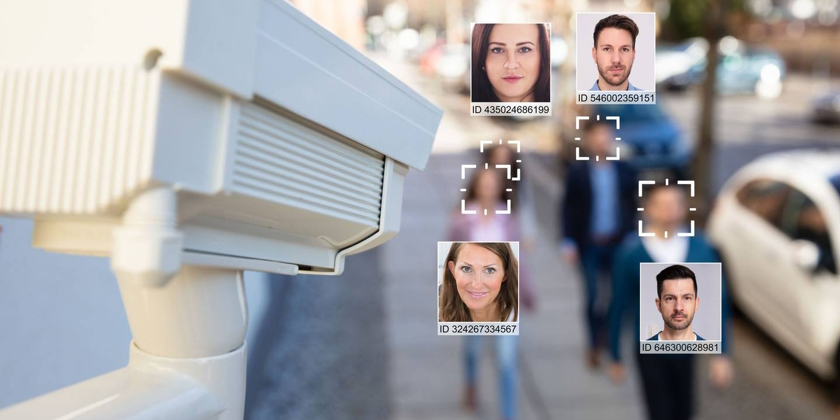In a world overflowing with cameras, their watchful gaze captures every moment. From the lenses adorning our phones to the ones nestled in the corners of buildings or soaring overhead on drones, cameras have become a ubiquitous presence. For decades, these eyes have dutifully surveilled cities, businesses, and homes. However, the vast reservoirs of footage remained localized, requiring the human eyes to comb through the ocean of pictures and videos.
Now, there is AI. These intelligent systems have the ability to effortlessly seek out a single vehicle amidst the bustling cityscape, deftly scan license plates, and even identify faces in real-time. There is no doubt that with AI’s guiding hand, the world of surveillance takes a quantum leap, providing a formidable edge to our security endeavors. Unfortunately, that very statement sounds exactly like a dystopian future, one that enables a model of repression – a deeply surveillance state where people are tracked, marked and categorized for use by public and private entities.
This is simply because surveillance and predictive policing through AI is a controversial venture. While technology is often used as a point to exemplify evolution, the ethics of its use must always be questioned.
To start, people need to know how AI is impacting their personal security and keep them safe. Despite modern CCTV cameras advancing with new features and better hardware, they are passive devices that only assist in resolving incidents rather than preventing them. With smart surveillance systems, video analytics allows home and business owners to automate real-time analysis of video footages to detect abnormal activities that could pose a threat to their security. This AI-driven technology helps security software learn and comprehend normal behavior, flagging any deviations or potentially harmful actions that might escape human observation.
But the impact of AI on surveillance does not end there. On a larger scale, some smart city initiatives are ingenuously blending surveillance technologies with IoT and computer vision. In this setting, intelligent cameras and sensors weave an intricate safety web throughout urban environments, enabling the government and local authorities to extrapolate valuable insights into various challenges the city faces. From crime prevention and efficient traffic management to optimized energy usage and waste reduction, the fusion of AI-powered surveillance systems with urban infrastructure empowers cities to address issues with unprecedented precision and efficiency. Rather than depending solely on manual monitoring, AI-powered systems notify its human counterparts of potential threats as they happen, preventing break-ins and reducing illegal activities.
In essence, AI-powered surveillance epitomizes a paradigm shift, bolstering personal and urban security to unprecedented heights. The fusion of human ingenuity with AI’s watchful eyes heralds a future where safety is no longer a privilege but a fundamental right for all. While the realm of AI surveillance is accompanied by a myriad of benefits, the ethical landscape reveals a complex dichotomy. The flip side casts a shadow of doubt with privacy advocates raising valid concerns about the potential misuse and infringement on individual rights.
One area of contention centers around sophisticated image and video recognition technology. Critics argue that such technology encroaches upon personal privacy, opening avenues for potential abuses. For instance, a recent development in Paris got the country’s civil rights group to voice their concerns. Under a new law, police are allowed to use CCTV algorithms to detect anomalies such as crowd rushes, fights or unattended bags. French digital activists worry that this act is enabling unacceptable levels of state surveillance, imposing mass control and breaching the foundation of freedom.
As much as AI collects and processes data, it doesn’t have the capacity to turn against us. However, this data-driven learning curve raises significant security risks. The true threat lies in how individuals may exploit these powerful technologies. As AI surveillance stores large volumes of data, including facial images, vital locations and crowd behaviors, safeguarding this repository becomes a top priority. Insufficient protection could render this trove of data an irresistible target for cybercriminals and hackers, resulting in devastating data breaches and spear phishing attacks.
To strike a delicate balance between harnessing AI’s potential and protecting individual rights, governments and organizations must prioritize comprehensive and transparent frameworks. Digital experts should be allowed to develop and leverage AI tools to foster an era of innovation. At the same time, AI needs to be regulated with safeguards and restrictions. With stringent regulations and guidelines, AI-powered surveillance can be implemented in a responsible manner, for the collective welfare of society.
Ultimately, the use of AI surveillance should not imitate Orwell’s nightmare, where an all-powerful state manipulates truth and subdues individuality. Instead, it presents an opportunity for improved security and the potential to address pressing societal challenges without sacrificing individual liberties. As such, AI surveillance must not erode the right to be anonymous, the right to preserve personal freedom and the right to ensure data privacy.

